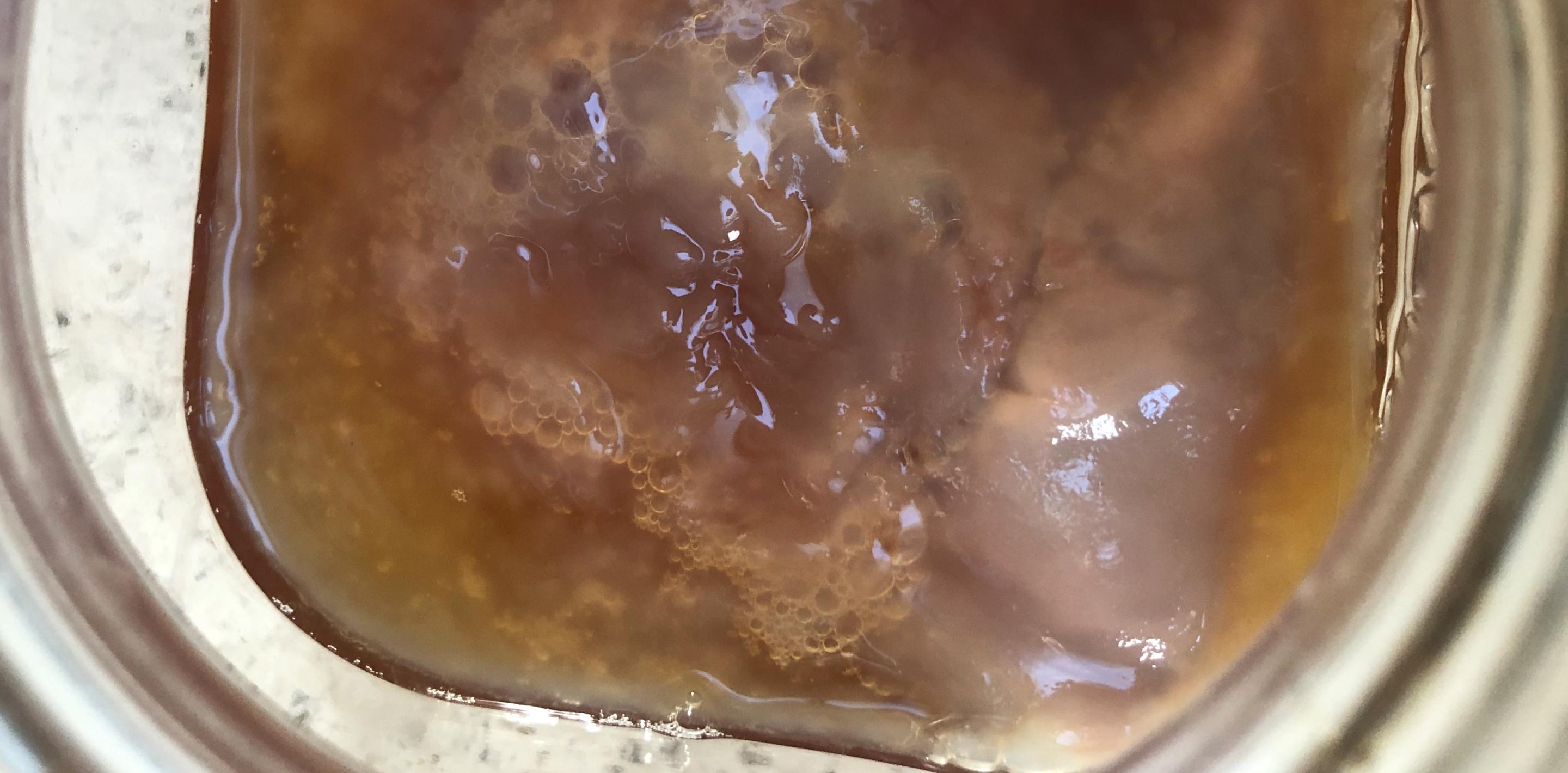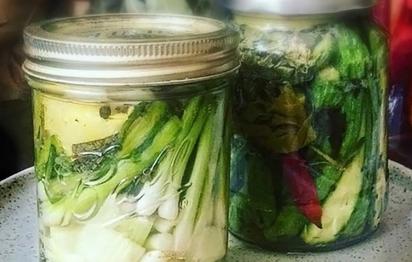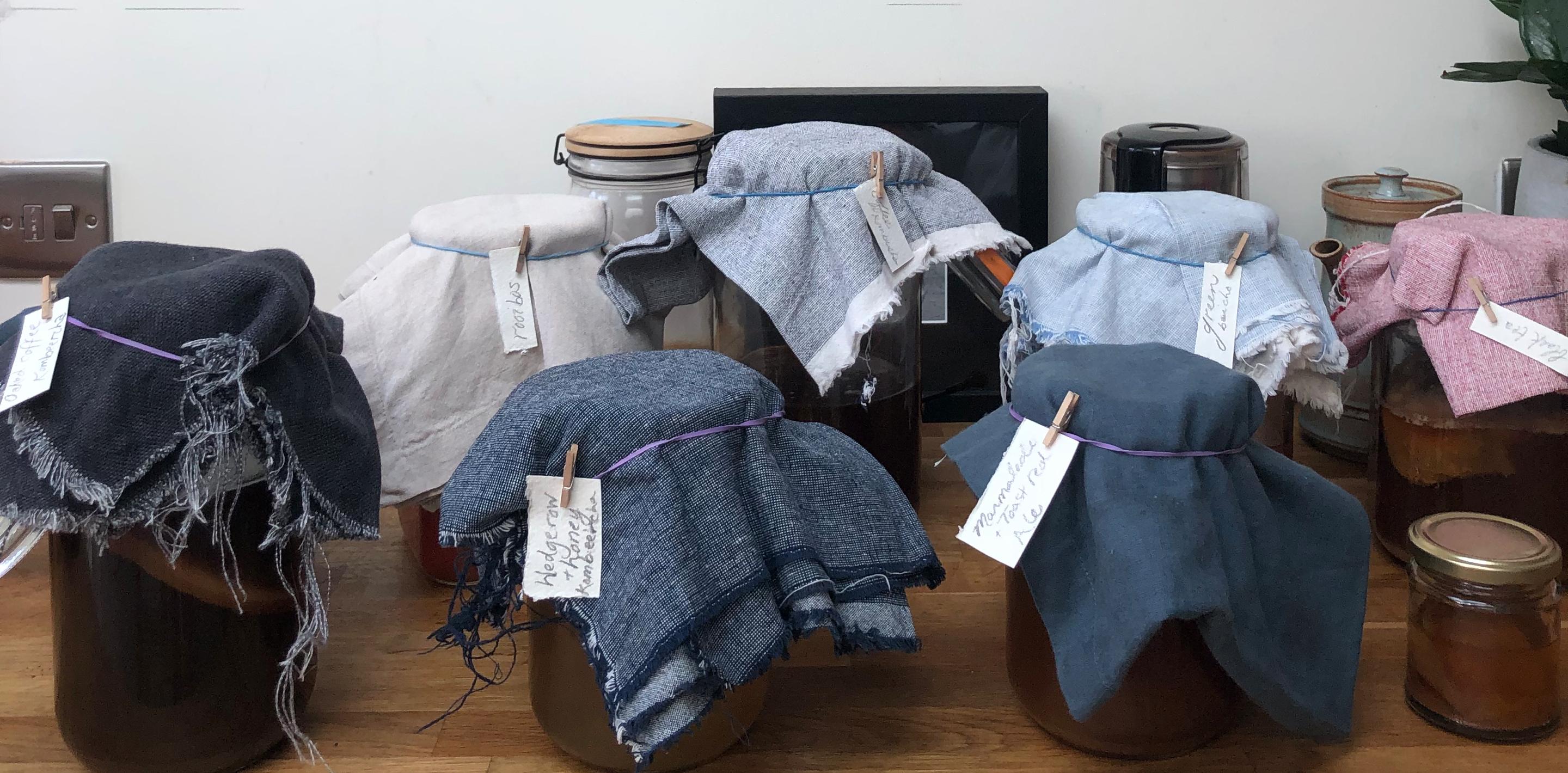
Source a kombucha SCOBY (or make your own)
You can also buy an organic-certified kombucha SCOBY online from happykombucha.co.uk, as well as brewing jars and more. Alternatively, see if you can source a kombucha scoby for free – you probably know someone who is already brewing it or knows someone who is. If so, they’ll probably have a SCOBY or two to spare as they reproduce the more you brew. Or, you can even make your own. It takes a little more time to birth a SCOBY but the principle is very similar to that of creating a live sourdough starter from scratch. Beneficial bacteria and yeasts are all around us – we just can’t see them.
To make a SCOBY from scratch, make a 250g mug of tea and add 2 tbsp sugar. Ensure you remove the tea bag. Cover your mug of sweetened tea with a cloth, making sure it’s secure, and leave at room temperature for 1 month. After this time, you should see a thin whitish film forming on top. It might look alarming but keep it covered and let it continue to ferment. Over this time bacteria and yeasts from the air will dive into the tea and consume the sugar. As the population grows, it’ll start to become visible, in the guise of a jelly-like SCOBY. After 2 months, the initial thin white layer should have thickened, giving you a viable kombucha SCOBY to start off your brews. Alternatively, you can just use some of the River Cottage kombucha, which contains live cultures, to kick start a homemade batch of kombucha. Just add 150ml River Cottage kombucha to your litre of freshly brewed tea (made with 4-8 tea bags, or 4 tablespoons loose leaf tea) and brew to our recipe.
Storing your SCOBY
You can use your SCOBY repeatedly. It will keep forever if you look after it properly; all it needs to thrive is air, water (infused with tea or just plain) and sugar. The longer you store and the more you brew, the more SCOBYs you’ll produce. Store your SCOBY in a jar with enough of the kombucha from your new batch (or brew up a mini batch) to fully cover it. Cover it with a cloth and keep at room temperature for up to 1 month before needing a fresh feeding of sweetened tea.
For more Fermentation inspiration, check out the award-winning River Cottage Fermentation Handbook by Rachel de Thample and follow Rachel on Instagram @dethample
Learn more about the art of fermenting

Fermenting is one of the most ancient and most widely used food and drink preparation techniques there is. If you love the tangy, savoury tang of sauerkraut, flavours of fermented veg, the delicate fizz of kombucha, the invigorating kick of kimchi, the delicate fizz of kombucha or the soothing calm of kefir, this is the course for you.
Fermentation is a transformative process that makes food not only more nutritious but also more delicious. By eating natural, whole and live foods, we can boost the profile of our healthy gut bacteria.
During this course you will be taken on a culinary adventure into the many realms of fermenting, exploring an array of krauts, kombuchas and lacto-fermented delicacies. By the end of the journey you will have your shelves lined with happy bubbling ferments and your fridge stocked with irresistible, meal-enhancing delights.

It’s important to create a strong, vibrant flavour before adding your SCOBY: kombucha are much tangier drinks than water kefir, which means delicate flavours (ideal for water kefir) can be overpowered and lost. This is a basic tea-based kombucha recipe which you can serve as is, add beery or other seasonal twists, or try our herby and beery variations below.
View recipe